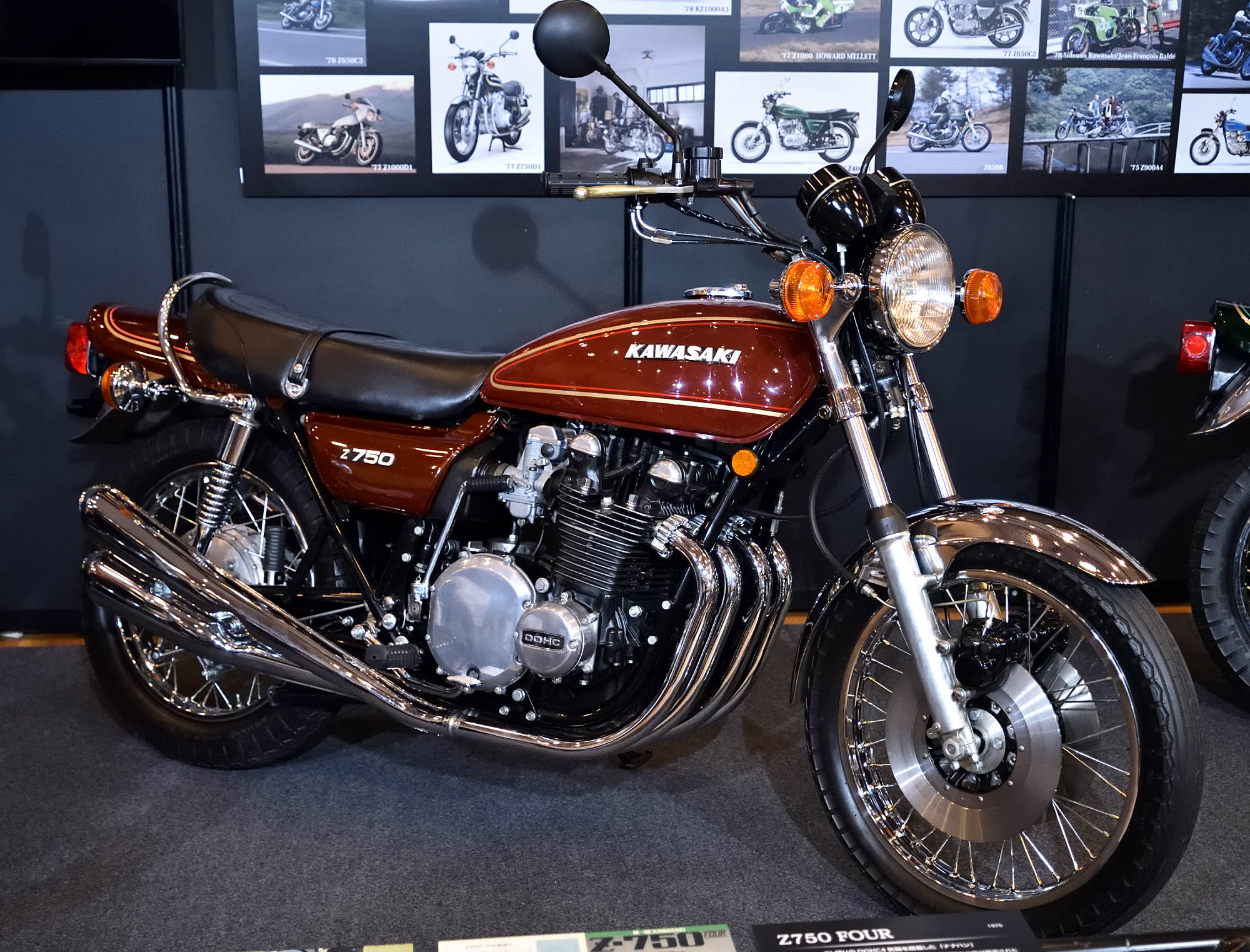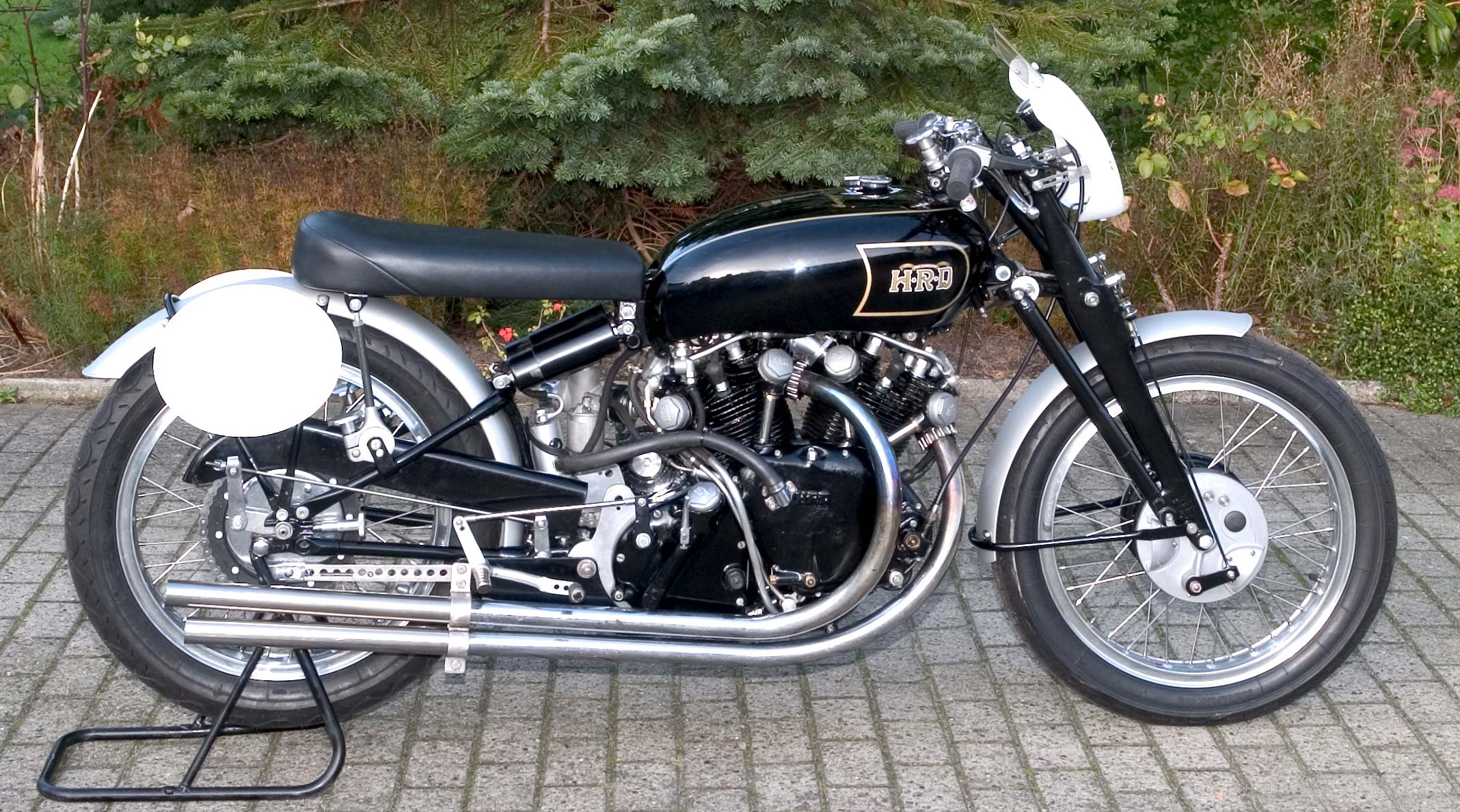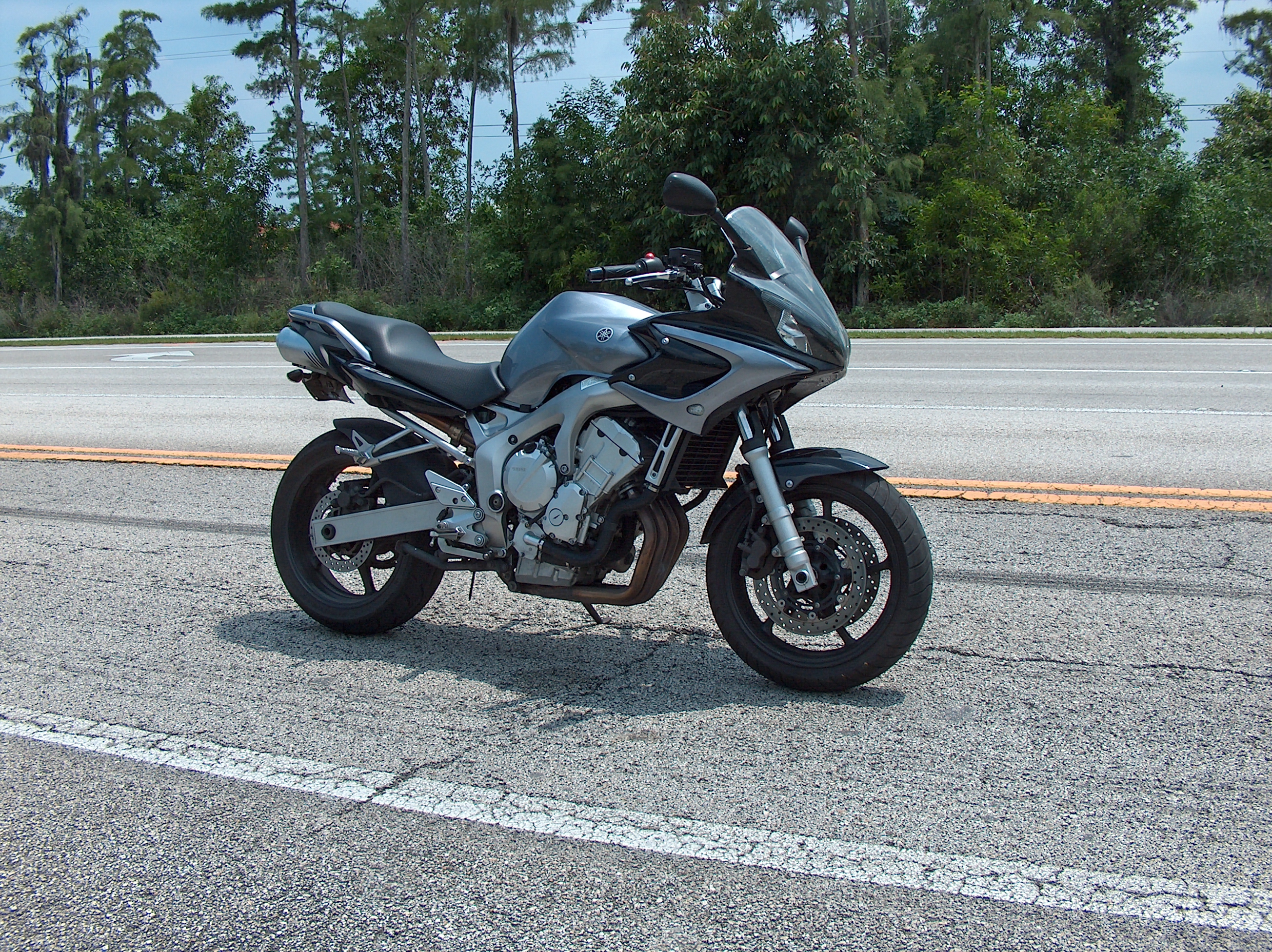|
Kawasaki Z750
The Kawasaki Z750 is a inline-four engine standard motorcycle made by Kawasaki from 2004 to 2012. It is a smaller version of the Kawasaki Z1000. The Kawasaki Z750 was launched in 2004 as an economy model, after its bigger brother, the Z1000 in 2003. It uses a 750 cc sleeved down version of the Z1000 engine, a cheaper front suspension and a conventional exhaust. Like the Z1000, which is considered a modern version of the Kawasaki Z900/Z1, the Z750 is considered a modern take on the Kawasaki Z750RS Z2. In 2007, Kawasaki launched a revised version of both the Z750 and the Z1000, with many stylistic and mechanical changes. In 2011, alongside the standard Z750, Kawasaki launched the Z750R, which has upgraded suspension and brakes components and a lightly revised styling. Variants and timeline *In 2004, Kawasaki launched the first model of the Z750. This was considered as Kawasaki's new middle-weight conceived to rival the Honda Hornet, Yamaha FZ6 Fazer and Suzuki SV650 ... [...More Info...] [...Related Items...] OR: [Wikipedia] [Google] [Baidu] |
Kawasaki Heavy Industries Motorcycle & Engine
Kawasaki Heavy Industries Motorcycle & Engine Company (川崎重工業モーターサイクル&エンジンカンパニー) is a division of Kawasaki Heavy Industries that produces motorcycles, All-terrain vehicle, ATVs, utility vehicles, jet ski personal watercraft, and general-purpose petrol engines. Before the 2011 fiscal year it was called Consumer Products & Machinery. Its slogan is "Let the good times roll!" Motorcycles Kawasaki's Aircraft Company began the development of a motorcycle engine in 1949. The development was completed in 1952 and mass production started in 1953. The engine was an air-cooled engine, air-cooled, 148 cc, Overhead valve, OHV, four-stroke engine, four-stroke single cylinder engine, single cylinder with a maximum power of at 4,000 rpm. In 1954, the first complete Kawasaki Motorcycle was produced under the name of Meihatsu, a subsidiary of Kawasaki Aircraft. In 1960, Kawasaki completed construction of a factory dedicated exclusively to mot ... [...More Info...] [...Related Items...] OR: [Wikipedia] [Google] [Baidu] |
Kawasaki Z750RS Z2
''For the 1970s two cylinder 750, see Kawasaki 750'' The Kawasaki Z750, also called Z2, is a four cylinder motorcycle made by Kawasaki as part of their Z series, introduced in 1973 for the Japanese market. Regulations at the time mandated a maximum capacity of , so the Kawasaki Z1 could not be sold in Japan. Visually the Z2 is similar to the Kawasaki Z1, with the main difference being the smaller displacement. The new 746 cc engine was built with newly designed pistons and crankshaft parts to give it a feel similar to the Z1's 900 cc four cylinder engine. The engine had a maximum output of 69ps at 9,000 rpm and could propel the Z2 to a maximum speed of 170 km/h. Production of the Z2 began in March 1973 and the bike recorded sales that were 10% higher than its nearest 750 cc competitor. The bike was featured heavily in the anime and manga series '' Great Teacher Onizuka'' as well as its predecessor ''Shonan Junai Gumi''. In Japan the Z2 was succeeded in 1978 by the four ... [...More Info...] [...Related Items...] OR: [Wikipedia] [Google] [Baidu] |
Kawasaki Z
The Kawasaki Z series is a family of standard/ naked bikes manufactured by Kawasaki since 1972. Single cylinder * Z200/KZ200 (1977-1984) * Z125 (2018–present) * Z125 PRO (2015–present) * Z250SL (2014–present) Parallel-twin * Z250 (2013–present) * Z300 (2014–2018) * Z400/KZ400 (1974–1984) * Z400 (2018–present) * Z650 (2017–present) * Z750 twin (1976–1976) Inline-four * Z400-J/KZ400-J (1980–1983) * Z500/Z550 (1979–1985) * Z650 (1976–1983) * Z750/Z2 (1973–1978) * Z750 (2004–2013) * Z800 (2013–2016) * Z900 (2017–present) * Z900RS/Z900RS CAFE (2018–present) * Z1 (1972–1975) * Z900/KZ900 (1976–1977) * Z1000/KZ1000 (1977–2005) * Z1000 (2003–2016) * Z1100 (1980–1986) * Z H2 (2020–2021) Inline-six * Z1300 (1979–1989) See also * Kawasaki KZ750 (1976–1987) * Kawasaki Zephyr (1989–2000) * Kawasaki ZRX1100 (1997–2005) * Kawasaki ZRX1200R (2001–2008) * Kawasaki ZR-7 (1999–2005) * Kawasaki GPZ series (1 ... [...More Info...] [...Related Items...] OR: [Wikipedia] [Google] [Baidu] |
Uni-Trak
A motorcycle's suspension serves a dual purpose: contributing to the vehicle's handling and braking, and providing safety and comfort by keeping the vehicle's passengers comfortably isolated from road noise, bumps and vibrations. The typical motorcycle has a pair of fork tubes for the front suspension, and a swingarm with one or two shock absorbers for the rear suspension. Front suspension The most common form of front suspension for a modern motorcycle is the telescopic fork. Other fork designs are girder forks, suspended on sprung parallel links (not common since the 1940s) and bottom leading link designs, not common since the 1960s. Some manufacturers (e.g. Greeves) used a version of the swinging arm for front suspension on their motocross designs. A single-sided version of the idea is also used in motor scooters such as the Vespa. The hub-center steering as developed by Ascanio Rodorigo, on a concept associated to Massimo Tamburini is a complex front swingarm alternati ... [...More Info...] [...Related Items...] OR: [Wikipedia] [Google] [Baidu] |
2009 Kawasaki Z 750 19
9 (nine) is the natural number following and preceding . Evolution of the Arabic digit In the beginning, various Indians wrote a digit 9 similar in shape to the modern closing question mark without the bottom dot. The Kshatrapa, Andhra and Gupta started curving the bottom vertical line coming up with a -look-alike. The Nagari continued the bottom stroke to make a circle and enclose the 3-look-alike, in much the same way that the sign @ encircles a lowercase ''a''. As time went on, the enclosing circle became bigger and its line continued beyond the circle downwards, as the 3-look-alike became smaller. Soon, all that was left of the 3-look-alike was a squiggle. The Arabs simply connected that squiggle to the downward stroke at the middle and subsequent European change was purely cosmetic. While the shape of the glyph for the digit 9 has an ascender in most modern typefaces, in typefaces with text figures the character usually has a descender, as, for example, in . T ... [...More Info...] [...Related Items...] OR: [Wikipedia] [Google] [Baidu] |
2008 Z750 ABS HPIM2673
8 (eight) is the natural number following 7 and preceding 9. In mathematics 8 is: * a composite number, its proper divisors being , , and . It is twice 4 or four times 2. * a power of two, being 2 (two cubed), and is the first number of the form , being an integer greater than 1. * the first number which is neither prime nor semiprime. * the base of the octal number system, which is mostly used with computers. In octal, one digit represents three bits. In modern computers, a byte is a grouping of eight bits, also called an octet. * a Fibonacci number, being plus . The next Fibonacci number is . 8 is the only positive Fibonacci number, aside from 1, that is a perfect cube. * the only nonzero perfect power that is one less than another perfect power, by Mihăilescu's Theorem. * the order of the smallest non-abelian group all of whose subgroups are normal. * the dimension of the octonions and is the highest possible dimension of a normed division algebra. * th ... [...More Info...] [...Related Items...] OR: [Wikipedia] [Google] [Baidu] |
Suzuki SV650
The Suzuki SV650 and variants are street motorcycles manufactured since 1999 for the international market by the Suzuki Motor Corporation, featuring a mid-sized V-twin engine and medium performance components. In 2009, Suzuki replaced the naked SV650 with the SFV650 Gladius. In 2016, the Gladius name was discontinued and the 2017 model was reverted to SV650. First generation (1999–2002) Suzuki introduced the SV650 in 1999 as a budget entry in the emerging naked bike market and featured both naked and fully faired versions. The bike provided a sporty though easily manageable ride. The combination of light weight, rigid chassis, strong handling, and the V-twin's strong mid-range torque appealed to beginner and experienced riders alike. The 2003 SV1000 was marketed as a bigger alternative to the second generation SV650. The SV650 immediately became popular, but American buyers wanted the sportier 'S' version that featured lower handlebars, higher foot pegs and a bikini ... [...More Info...] [...Related Items...] OR: [Wikipedia] [Google] [Baidu] |
Yamaha FZ6 Fazer
The Yamaha FZ6, also known as the FZ6 FAZER is a ' motorcycle that was introduced by Yamaha in 2004 as a middleweight street bike built around the 2003 YZF-R6 engine. The engine is retuned for more usable midrange power. As a multi-purpose motorcycle it can handle sport riding, touring, and commuting. In 2010, the FZ6 was replaced by the fully faired FZ6R in North America, and the XJ6 Diversion, XJ6 N and XJ6 Diversion F in Europe. The FZ6 styling was continued in 2011 with the Yamaha FZ8 and FAZER8 The Yamaha FZ8 and FAZER8, also known as the FZ8N and FZ8S, are motorcycles produced since 2010 by Yamaha Motor Corporation for sale in the United States, Europe, Canada, Australia and New Zealand. The FZ8 is a naked bike, while the virtually iden .... This bike is a popular choice for its half-fairing, upright seating position, and underseat exhaust. These features position it between a full supersport and a naked streetfighter (although in Europe and Australia, there is an ava ... [...More Info...] [...Related Items...] OR: [Wikipedia] [Google] [Baidu] |
Honda CB600F
The Honda CB600F (known as the Hornet in Europe and Brazil and 599 in the U.S.) is a standard motorcycle manufactured by Honda. It is powered by a liquid-cooled inline-four engine, originally a detuned version of that in the Honda CBR600 sport bike, which currently produces around . The 'Hornet' name was not taken to North America as AMC, and its successor, Chrysler, had trademarked the name with the AMC Hornet. History The Honda CB600F Hornet was introduced for Europe in 1998. It was based on the CB250F that was restricted to at its home-market (Japan) because of local laws (this bike was released only in Japan from 1996 or 1997 until 2015, when it was succeeded by the CB300F). The bike has a six-speed transmission. Its suspension consists of a single shock in the rear and a conventional telescopic fork in the front until it was succeeded by an upside-down fork in 2005. Its brakes are dual-disc, Nissin twin piston in the front and single-disc, Nissin single piston in the ... [...More Info...] [...Related Items...] OR: [Wikipedia] [Google] [Baidu] |
Kawasaki Z750
The Kawasaki Z750 is a inline-four engine standard motorcycle made by Kawasaki from 2004 to 2012. It is a smaller version of the Kawasaki Z1000. The Kawasaki Z750 was launched in 2004 as an economy model, after its bigger brother, the Z1000 in 2003. It uses a 750 cc sleeved down version of the Z1000 engine, a cheaper front suspension and a conventional exhaust. Like the Z1000, which is considered a modern version of the Kawasaki Z900/Z1, the Z750 is considered a modern take on the Kawasaki Z750RS Z2. In 2007, Kawasaki launched a revised version of both the Z750 and the Z1000, with many stylistic and mechanical changes. In 2011, alongside the standard Z750, Kawasaki launched the Z750R, which has upgraded suspension and brakes components and a lightly revised styling. Variants and timeline *In 2004, Kawasaki launched the first model of the Z750. This was considered as Kawasaki's new middle-weight conceived to rival the Honda Hornet, Yamaha FZ6 Fazer and Suzuki SV650 ... [...More Info...] [...Related Items...] OR: [Wikipedia] [Google] [Baidu] |
Kawasaki Z900/Z1
The Kawasaki Z1 is a four-cylinder, air-cooled, double-overhead camshaft, carbureted, chain-drive motorcycle introduced in 1972 by Kawasaki. Following the introduction of Honda's CB750 in 1968, the Z1 helped popularize the in-line, across-the-frame four-cylinder, a format that became known as the ''Universal Japanese Motorcycle'' or ''UJM.'' The Z1 was noted for being the first large-capacity Japanese four-cylinder motorcycle to use the double-overhead-camshaft system on a production motorcycle. When it was introduced, only the MV Agusta 750 S used this system; it was a very expensive limited-production machine, as opposed to the Kawasaki which was less than half the price. Marketed variously as the Z1-900, 900 Z1 or 900 S4 ("Super Four"), the Z1 was the first of Kawasaki's Z models. History The Kawasaki Z1 was developed under the project name "New York Steak". In the late 1960s Kawasaki, already an established manufacturer of two-stroke motorcycles, had begun prototyping a ... [...More Info...] [...Related Items...] OR: [Wikipedia] [Google] [Baidu] |
Kawasaki Heavy Industries
(or simply Kawasaki) is a Japanese Public company, public multinational corporation manufacturer of motorcycles, engines, Heavy equipment (construction), heavy equipment, aerospace and Military, defense equipment, rolling stock and ships, headquartered in Chūō-ku, Kobe, Chūō, Kobe and Minato, Tokyo, Minato, Tokyo, Japan. It is also active in the production of industrial robots, gas turbines, pumps, boilers and other industrial products. The company is named after its founder, Kawasaki Shōzō, Shōzō Kawasaki. KHI is known as one of the three major heavy industrial manufacturers of Japan, alongside Mitsubishi Heavy Industries and IHI Corporation, IHI. Prior to the World War II, Second World War, KHI was part of the Kobe Kawasaki ''zaibatsu'', which included JFE Holdings, Kawasaki Steel and K Line, Kawasaki Kisen. After the conflict, KHI became part of the DKB Group (''keiretsu''). History Kawasaki Shōzō, Shōzō Kawasaki, born in 1836, was involved with the marine indu ... [...More Info...] [...Related Items...] OR: [Wikipedia] [Google] [Baidu] |





